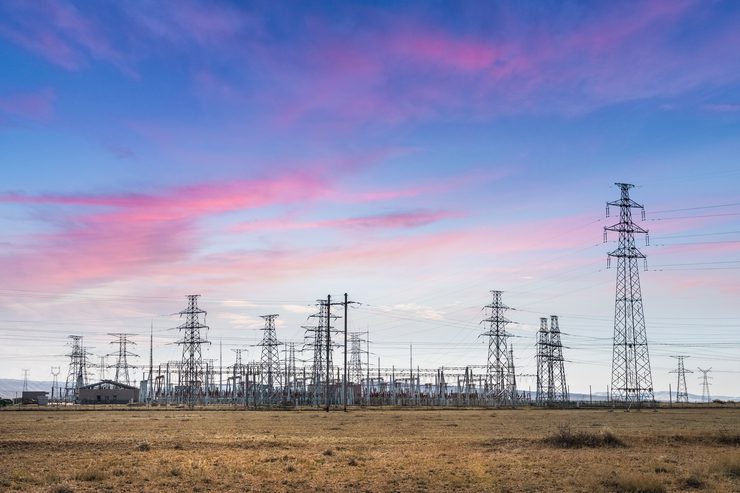As the world accelerates toward an electrified future driven by renewable energy, electric vehicles (EVs), and industrial electrification, energy distribution grids face unprecedented challenges. From grid overloads and delays in connecting distributed energy resources (DERs) to frequency instabilities and inadequate infrastructure upgrades, the need for transformative action is clear. These challenges, however, present a unique opportunity to rethink and reshape how the world’s grids operate.
COMMENTARY
Building on my recent discussions at the World Economic Forum’s Clean Power Executive Group, I propose four key action areas that can assist in enabling this transformation: adopting a Totex approach, scaling flexibility markets, improving data accessibility, and addressing the complexities of power electronics in hybrid grids.
Embrace Totex: A Smarter Investment Model
Traditionally, grid investments have relied on capital expenditure (Capex) models that prioritize long-term, predictable projects. However, today’s decentralized, multi-player energy system requires more agility—this is where Totex, or total expenditure, comes in. By integrating both Capex and operational expenditure (Opex), Totex enables the adoption of innovative digital solutions, maximizing the value of existing infrastructure while reducing costs by up to 30%.
Progress has been made, for example in Europe with the 2024 Electricity Market Design Directive, which encourages Transmission and Distribution System Operators (TSOs and DSOs) to adopt Totex models. However, the national implementation of regulations is slow, hampered by lengthy regulatory cycles that can stretch up to five years. Accelerating regulatory timelines and introducing dynamic pricing models will be essential to signal where grid congestion needs to be resolved, ensuring investment flows to the right places at the right time.
Efficiency Gains Through Flexibility Markets
Flexibility markets hold immense potential to optimize grid performance while reducing investment needs by up to 20%. These markets allow DSOs to procure flexibility from energy producers and consumers, enabling them to manage congestion and adapt to demand spikes more effectively.
Encouraging examples are emerging. In the UK, 4% to 5% of total energy production is now contracted through flexibility mechanisms, thanks to a progressive regulatory framework. Italy’s RomeFlex project demonstrates the potential of predictive tools, reducing grid modernization costs by half. Scaling these successes will require harmonized regulations across regions, standardized data handling, and the development of robust markets where DSOs can seamlessly purchase flexibility services.
Accessible, High-Quality Data
High-quality, accessible data is essential for unlocking the full potential of artificial intelligence (AI) and will serve as the backbone of a modern, efficient grid. Yet, for many DSOs, the gap in data availability is stark. A typical DSO has high-quality grid data for only 40% or less of its infrastructure. The remaining 60% lacks sufficient digital model quality, making it inadequate for use cases such as flexibility or capacity management.
The challenges are compounded by several real-world limitations. In Germany, only 1% of meter reads are available with a 24-hour delay, leaving DSOs with insufficient data for timely decision-making. In North America, extreme weather events often disrupt emergency repairs and significantly reduce grid model accuracy, further complicating response efforts.
Adding to these hurdles, while an increasing number of appliances are internet-connected, much of the data remains inaccessible to DSOs. This lack of integration prevents grid operators from fully leveraging the benefits of digital connectivity.
Examples of progress offer a way forward. In Spain, DSOs have developed unified systems for data exchange, allowing consumers to access their usage data and share it with third parties. Similarly, the UK has made grid data publicly accessible to industry stakeholders, enhancing transparency and supporting smarter network planning. For this progress to become the norm, national regulations must mandate data frameworks, enforce standardization, and ensure that DSOs can access and utilize critical data to optimize grid performance.
Addressing Power Electronics Challenges
It is no secret that the transition from traditional rotating mass generators to power electronics-driven systems, such as rooftop solar panels and EV chargers, introduces new operational challenges. Maintaining system frequency, managing harmonics, and ensuring compatibility between converters are now critical issues in hybrid grids.
To address these complexities, industry-wide collaboration is essential. Large-scale research, real-time simulations, and hardware demonstrators are needed to develop the technical standards required for grid stability. Initiatives like Hawaii’s ReNew100 project, which explores reliable grid operation with 100% renewable generation, provide valuable insights. Collaborative efforts must focus on scaling such innovations to ensure that converter-based grids can meet the demands of a renewable-powered future.
Driving the Energy Transition Forward
The global energy transition and historic electrification wave we find ourselves in presents both challenges and opportunities. Through regulatory evolution, flexible markets, robust data frameworks, and innovative technical solutions, we can build a resilient, efficient, and sustainable energy distribution grid.
But it won’t come easy, achieving this will require collaboration across industries, policymakers, and innovators. By embracing the potential of Totex, fostering flexibility markets, prioritizing data accessibility, and tackling power electronics challenges, we can not only meet today’s energy demands but also power a sustainable future.
—Thomas Kiessling is CTO for Siemens Smart Infrastructure.
